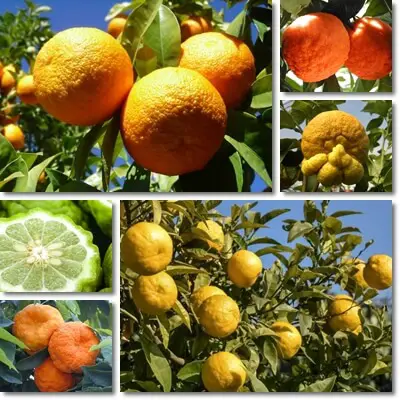Commonly known as the bitter or sour orange, or the Seville or marmalade orange, Citrus aurantium is the orange to use if you are looking to make traditional marmalade, the French bigarade sauce or the aromatic Curaçao and Curaçao triple sec or the select digestif Grand Marnier Cordon Rouge. Aside from its more traditional uses, the bitter orange is famous for its weight loss-conducive appetite-inhibiting, fat-burning, metabolism-enhancing, energy-boosting properties.
The fruit is a source of vitamin C and carotene antioxidants with vitamin A activity, dietary fiber, antioxidants as well as compounds with both benefits and side effects. Preparations from the pulp, juice, pith and rind have been used for constipation relief.
What is bitter orange?
Bitter orange is the common name for a variety of orange with a bitter and acidic taste. It is one of two major orange varieties, the other being the sweet orange. Both varieties are actually hybrid citrus fruits, obtained by crossing mandarins (Citrus reticulata) and pomelos (Citrus maxima, Citrus grandis). There are actually several different cultivated varieties of the bitter orange, some of which are named after the parts of the world where their cultivation is extensive. For example, the nagpur orange is named after the Nagpur city of the Maharashtra state in India, and is now a fruit with PGI, protected geographical indication of origin. Another example, the Curaçao orange, named after the Curaçao island in the Caribbean Sea it is native to and after the Curaçao liqueur, a specialty product flavored with dried Curaçao bitter orange peel.

The variety is known under the scientific name Citrus × aurantium. Other common names include:
- the sour orange (because of the extremely acidic juice of the fruit);
- the Seville orange (after the name of the Spanish city of Seville, one of the first to extensively cultivate and export bitter oranges; bitter orange cultivation is a legacy of Arabic culture, the citrus fruit having been brought to the Iberian Peninsula by Arabs around the 10th century);
- marmalade orange (one of the two most common uses of this highly acidic citrus fruit is marmalade-making; this particular variety is used for traditional British orange marmalade);
- bigarade (after the French sauce with the same name, made with bitter orange peel).
What does bitter orange look like?
While its appearance may differ slightly depending on the cultivated variety (and there are several of them), for the most part, the bitter orange looks like an ordinary sweet orange: large size, round shape, thick rind that starts out green, then turns orange, and the characteristic sectioned appearance of the pulp which is divided by a thin membrane into several kidney-shaped sections, separated from the rind by a soft, relatively thick, sponge-like tissue called a pith or albedo.
Some fruit varieties have a smooth rind, looking more like sweet oranges, while others have a dimpled rind, making them more easily to tell apart. Some have less pulp and a thicker pith and some have a ratio of pulp to pith more similar to that of sweet oranges. The seeds, if present, are disposed almost circularly around the center of the fruit and are of varying sizes, depending on their stage of development, white and somewhat oval.
What does bitter orange taste like?
While the fruit is edible raw, its natural taste is sometimes so unpalatable that it deters consumption, hence the reason it is mainly used for making marmalade. The taste of the bitter orange is described as being both bitter and sour or acidic. The exact degree of bitterness and acidity depends on the cultivar, and considering that citrus fruits readily hybridize with one another, and have done so extensively throughout their history, to the point there are almost impossible to distinguish from one another, significant variation in taste may exist between the different varieties of bitter orange.

Common uses
Bitter orange uses include the following:
- preserves: traditional bitter marmalade, compote, sweet and bitter sauces (made from the whole fruit or just peel).
- sauces: both dessert sauces and savory sauces for dressing meat and vegetable dishes such as the French sauce bigarade (made from the whole fruit or just peel).
- pickles: the whole fruit, peel and pulp, is cut into pieces and pickled with salt.
- liqueurs, bitters, digestifs: Curaçao, Curaçao triple sec, Grand Marnier Cordon Rouge (flavored with the dried peel), and other bitters.
- other beverages: the Italian Chinotto, a carbonated soft drink; Witbier, a specialty of white beer (the juice and peel may be used).
- tea: made by infusing the fresh or dried flowers, dried peel or dried fruit with peel and pulp.
- flavorings: tea flavoring, citrus fruit food flavoring (typically only the peel is used); bitter orange blossom water used to flavor desserts, beverages and even coffee and water (obtained from the distilled essential oil extracted from the flowers).
- uses for bitter orange juice: although unpalatable, the juice can be consumed as it is, or as an aperitif to aid digestion, or used to marinate meat, pickle foods or as a dressing for salads or souring agent for soups and stews.
- the tree: the bitter orange tree is used as a grafting stock for other more popular commercial varieties of citrus fruit.
- supplements: bitter orange supplements (made from the dried and ground peel, sometimes also pith, membrane and, rarely, pulp).
- other products: flower and peel essential oils are used in cosmetics and to make perfume; the leaves and whole fruit are used for making soap.
Nutritional information
Bitter oranges are high in citric acid and other organic acids, hence their sour taste. The bitterness is owed to furanolactone compounds such as limonin and other limonoids and bitter flavonoids, furanocoumarins and flavonoid glycosides. All parts of the bitter orange contain flavonoids such as naringenin, naringin, hesperidin and neohesperidin, but also tyramine, octopamine and synephrine, biologically active compounds that are a source of both benefits and side effects. The peel in particular is high in pectin, the soluble fiber that helps bind marmalade and jams.
The bitter orange is highest in vitamin C, but also contains vitamin A from carotene antioxidants such as beta-carotene, vitamins B1, B2, B3, B5, B6, B9, choline and trace amounts of vitamin E, and limited amounts of calcium, copper, iron, magnesium, manganese, phosphorus, potassium and zinc. Considering it’s not a popular fruit to eat raw, there isn’t much nutritional information available. What is known is mostly inferred from information on the nutrition value of sweet oranges and other citrus fruits.
What are the benefits?
Potential benefits associated with consumption of small amounts of the fresh fruit may include:
- Tonic properties from vitamins and minerals content and stimulating effects from tyramine metabolites such as synephrine.
- Extracts and supplements raise blood pressure and heart rate which may be good for hypotension.
- Extracts, sugar-less preparations containing the rind and supplements have modest cholesterol-lowering properties.
- Anti-inflammatory, antibacterial and antiviral benefits from various compounds in the fruit.
- Antifungal properties against athlete’s foot, ringworm and other fungi from preparations containing bitter orange essential oils.
- Minor benefits for the skin: the juice has strong astringent properties and, diluted, may help control sebum production, with benefits for acne-prone skin.
- Potential sedative properties from extracts and various preparations containing the peel.
- Minor benefits for gastrointestinal upset as a result of a reduction in gastrointestinal motility and subsequent antispasmodic effects.
- Preparations of the fruit such as bitters act as digestif aids.
- The raw fruit pulp and juice help combat nausea thanks to their acidic taste.
- Minor benefits for constipation relief as a result of the high pectin content of the peel.
- Studies have observed minor weight loss benefits with the use of bitter orange supplements, usually in combination with other supplements such as caffeine.
- Bitter orange weight loss benefits
Synephrine and other tyramine metabolites in bitter orange supplements and extracts have been shown to reduce gastric motility with effects such as hunger suppression, stimulate processes that initiate the breakdown of fat with the purpose of releasing energy and increased resting metabolic rate energy expenditure. However, these effects are minimal and dose dependent (on the amount of synephrine in the supplements), not to mention the risks associated with taking bitter orange supplements may outweigh the benefits.
What are the side effects?
Be weary of the bitter orange! The intensely aromatic citrus fruit is a source of both benefits and side effects, and the side effects can, in some instances, be extreme. Here is a list of potential side effects:
- Causes acid reflux, heartburn. The fruit is a source of organic acids such as citric acid and can cause acid reflux and subsequent heartburn.
- Bad food for gastritis. As a result of its organic acids content.
- Irritant properties. A high concentration of organic acids, especially in the juice, can cause irritation and burning sensation of the gums, tongue, mouth and throat, but also skin.
- Photosensitization. Ingestion of the raw fruit, fruit extract or various preparations meant for medicinal use or topical use of the fruit or essential oil can cause skin sensitivity to sunlight radiation and something akin to sunburn.
- Interacts with medication. Taking bitter orange supplements or extracts or, more rarely, eating the raw fruit in significant amounts, can affect the way the body metabolizes certain medications such as statins, blood sugar-lowering medication, antiviral medication, anti-anxiety, antidepressant and high blood pressure medication etc.
- Causes rise in blood pressure, heart rate, angina. Bitter orange supplements are suspected to have caused seizures, convulsions, myocardial infarction and stroke. Caution is advised.
